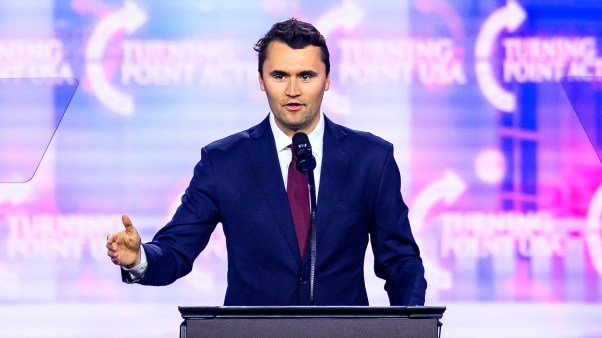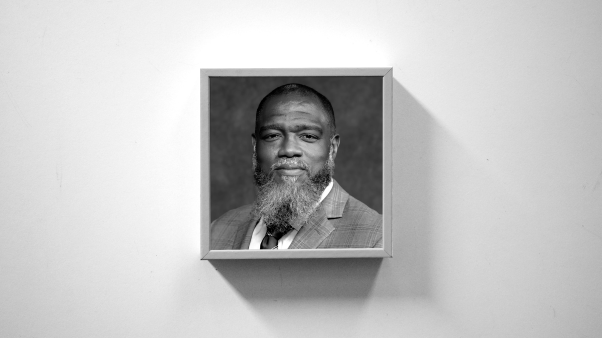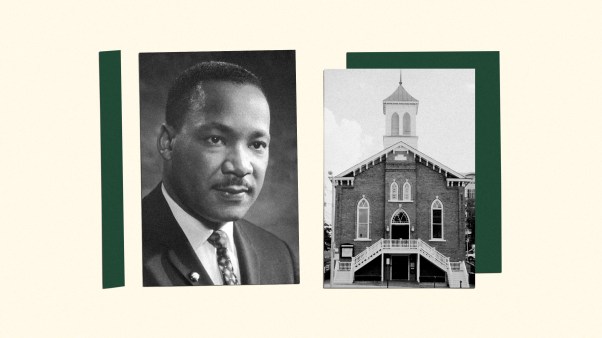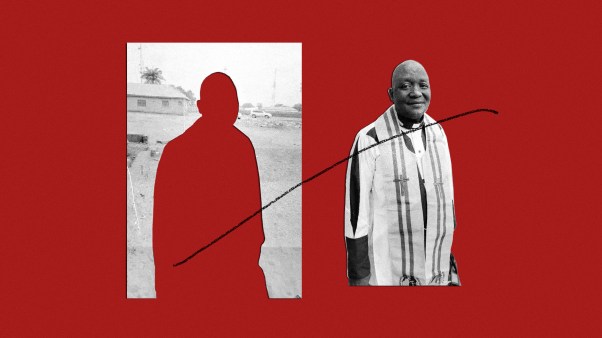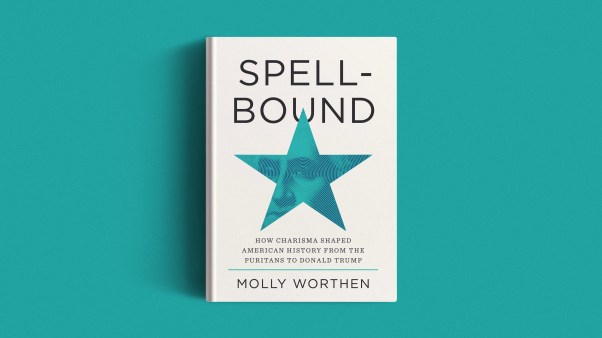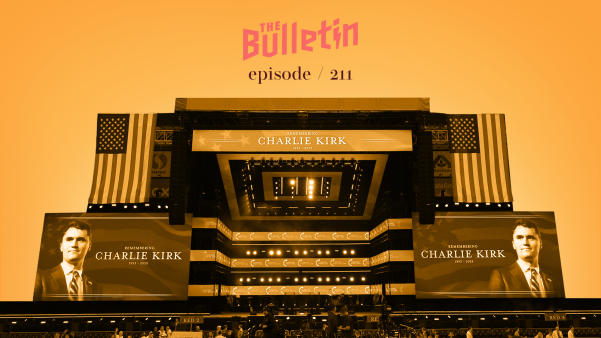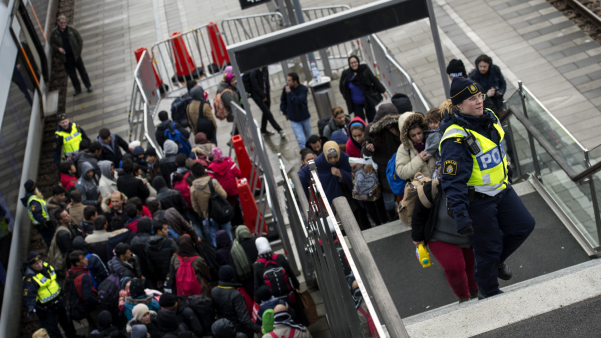Campus Crusade for Christ is mushrooming. It was at work on 155 campuses last May; now it’s on 303. Participating students have more than doubled in the current academic year.
Staff numbers are up 67 per cent this year also, but the press of the crowd is making the effervescent, evangelistic movement increasingly student-run. Founder-President William R. Bright denies any shift in strategy or philosophy, preferring to speak of “evolution.” He insists that basically Crusade is “not a student-led program.” On many local campuses, however, the change is dramatic. Bright sees greater student involvement as a result of Crusade’s growth. Many on campus believe a greater student role is sparking that growth.
Crusade staff members often used to direct the entire program, conduct most of the meetings, do most of the evangelism. As University of Wisconsin student mobilizer Duane Dobschuetz puts it: “Staff ran things. Students tended to sit there and watch. It was just another organization. It killed our creativity.”
The movement is growing so fast now that staffers just can’t do everything. So last summer Crusade gave the equivalent of staff training to 8,000 students at its handsome hotel-headquarters near San Bernadino, California. “We gave the students the authority to start their own ministries on their campuses if they stayed in touch with the district staff team. The team is there to advise and support,” said national field worker Stephen Meyer.
Now many staffers are not resident at a single campus but travel in teams within a geographical area, going where the Spirit and need lead. And students increasingly plan local strategy and speak in fraternity and sorority houses.
Students are also “more on their own now,” Bright said, in leading the basic Crusade units on campus, the “action groups” of about a dozen students. Midwest staffer Robert Andrews says action groups are formed by students who desire them and are run the way they choose. The purpose of the groups, he adds, is not witness but fellowship.
Indigenous student leadership. Small fellowship groups. Sounds as if Crusade is getting more and more like the older, lower-key evangelical campus movement, Inter-Varsity Christian Fellowship. Bright denies the two movements are similar or competing. He emphasizes staff control and says action groups are not IVCF-type Bible studies but “revolutionary cells” to map evangelistic strategy and share victories and defeats.
Late in January, Bright met in Denver with the IVCF directors for the United States and Canada and the president of the Navigators—the first time the leaders of the four campus movements had ever gotten together. A terse news release said the quartet explored ways in which the organizations “could complement one another.” A second meeting reportedly will be held before summer to discuss the overlap issue more directly.
Another recent Crusade change is elimination of such requirements as the one that each staff member make at least fifteen appointments a week to talk with non-Christians. To some, this made a law out of witnessing.
At a November conference where the new emphasis was discussed, Andrews told 300 Midwest collegians that without compulsion, new Christians eventually develop a natural hunger to study the Bible, and that evangelistic witnessing comes as a “natural overflow” of the Holy Spirit.
“You can’t earn God’s love. You must be willing to be a glove for God’s hand. The catch is that you don’t have to be a star to be a glove.… You just have to be available.”
Students from Northwestern University, where the new approach began last fall, said the movement had taken on a freedom and spontaneity that formerly were lacking, and was drawing more students than ever.
Andrews told the conference that in a critical self-evaluation, Crusade had concluded that staff control on campus and emphasis on crusade methods may have put a damper on things. He hammered home two points: (1) Direction of the ministry was being put squarely in the hands of students. (2) Students are totally free to live, grow, and share their faith in the manner they desire. His comments seemed aimed at freeing students from any sense of pressure or obligation regarding their Christian lives or participation in Crusade activities.
“We are experimenting,” said Dob-schuetz, a senior from Milwaukee. “We don’t talk about Crusade with students. We are not hung up on pushing Crusade. We are talking about the person of Jesus Christ.”
The student-run ministry is raising the “quality of student discipleship” as well as the numbers, says Richard Edic, one of the southern California directors. Last fall he turned the Long Beach State College work over to students whom he had trained intensively the past year. Several months later Edic returned and found that “our student leaders had grown from boys to men. They are conditioned, trained Green Berets. They aren’t soft. They have a spiritual hardness in the good sense. They have shaped up. And they are having a campus-wide impact.” He said decisions for Christ have risen “a great deal” but offered no figures.
Edic now covers forty campuses, after having spent two years “running around Long Beach State with a clipboard trying to evangelize the campus and holding Christian students’ hands.”
At the University of Texas, active Crusade membership has grown from sixty to 200 since action groups began last fall, says central Texas director Jon Buell. Growth there and on nearby campuses is “staggering,” he said. “We have never had so much to handle before.” “Student mobilization is the key in our day to a widespread evangelistic impact,” Buell believes. “It will not lower the standards or dull the edge of the ministry. Students are capable not only of reaching others for Christ but also of running a ministry.”
Wisconsin director James Green sees in Crusade a deeper emphasis on the building up of Christians. “God has been impressing the meaning of grace in a new way on the hearts of staff all over the country,” he said. “It has been talked about all down through the organization.
“A lot of students have been set free. Witness is still important, but some students used to feel they weren’t accepted if they didn’t witness. Now many of them want to witness.”
Student mobilization at the University of Wisconsin began to increase late last semester as students gained leadership roles and demanded more training from staff members, Green said.
But staff is still crucial and—despite the end of the fifteen-a-week rule—still disciplined. Workers must raise their own support, and everyone gets the same salary: $250 a month for a single person, increased $10 annually to top pay of $300 a month. Couples get from $350 to $450 monthly, with allowances for up to four children. (Couples with more than four children, in Crusade slang, have “cracked the faith barrier.”) No conscientious objectors are hired.
Even with such rigors, Bright has built a staff of nearly 1,200, including burgeoning national work in thirty-seven foreign countries. From the basic campus effort have come a series of new ministries (see story below).
“We believe the Great Commission,” Bright says. By 1976 he envisions a staff of 10,000 at work in every nation on the globe—including Communist China.
NEW FOLK
From its campus base (story above), William Bright’s Campus Crusade has developed a ministry with thirteen major divisions, using everything from sex lectures to folk songs as evangelistic wedges.
Last year 75,000 pastors and laymen attended Crusade week-long “institutes for evangelism” all over the country. In recent weeks, Bright has led institutes in Florida, Michigan, Arizona, and Illinois, while holding conferences with Crusade college staff along the way.
In the 1966–67 school year, Crusade’s biggest crowd was 2,500 for a lecture series on “Sex and the Single Collegian” by national field chief Jon Braun. This year the same series drew 6,000 students at Western Kentucky University.
Then there are two troupes of the “New Folk,” five men and four women who tour campuses with a glossily packaged folk show that ends with personal testimonies by the performers, a ten-minute gospel appeal, and a prayer of commitment.
The idea began last year, and the original troupe played to 100,000 during the first season. The group charges $160 per day for appearances, booked through Campus Crusade districts. Some concerts are free and some charge admission. Audiences are 80 per cent college students.
The entertainment part includes folk material, pop songs, spirituals, original gospel songs with lively arrangements, and some humorous sketches. The lighting, attire, staging, and pace produce an up-tempo evening. The professional quality, judging from last month’s show at the University of Maryland, makes for an unusual, appealing Christian witness.
AUSTRALIA CRUSADE BEGINS
In Sydney, Australia, sometimes called “the most evangelical city in the world,” evangelist Billy Graham opens a major nine-day crusade next week.
Perhaps the claim could be disputed, but the wholehearted sponsorship of the meetings by the Sydney Diocese of the Church of England could not. This support wholly alters the usual supporting framework of Graham crusades.
The Church of England, both in its native established form and in its far-flung “colonial” imitations, is sometimes indifferent toward—even violently against—Graham’s theology. But in Sydney the Anglican Archbishop, Marcus Loane, is president of the forthcoming crusade. Bishop Clive Kerle of the country Diocese of Armidale, 400 miles from Sydney, is chairman of the executive committee, and A. Jack Dain. bishop coadjutor of Sydney, is vice-chairman. All are staunch evangelicals.
Other colors in the theological spectrum are not absent in Sydney. But evangelicals are clearly in the ascendancy in public and church life. They do not have to fight to survive. They are not a despised minority. Rather, they are people who proudly trace their heritage back to the convict days 180 years ago when evangelical chaplains came with the ships to “convert the natives and plant the Gospel firmly in Botany Bay.”
Graham’s 1959 crusades in Australia drew the largest percentage response of any he has seen anywhere. The spirit of unity and cooperation that characterized the effort could almost be felt in the Sydney finale, when a crowd of 150,000 turned out. In four weeks, more than a million people attended, and more than 56,000 recorded decisions for Christ. In contrast, Graham’s 1966 meetings in Earls Court, London, drew 900,000 with 36,000 decisions.
But, as in every part of the world, the mood in Australia has changed since 1959 almost as drastically as the length of women’s skirts, and Graham faces a new challenge.
Australians are remarkably casual, leisure-minded, home-loving people. Many do not believe in Jesus Christ, but few list themselves as “atheist” or “non-believer” on the census form. Census statistics show 34 per cent of the population belong to the Church of England and 25 per cent are Roman Catholic. These figures bear little relation to church attendance, where the Anglicans do badly and Baptists do well.
National catastrophes like the recent drowning of Prime Minister Harold Holt cause scarcely a ripple in the nation’s comfortable affluence. The nation’s policies are tied to the United States, though a minority clamor for independence. The death of young Australians in Viet Nam seems not to have caused much of a change in attitude.
Australians are somewhat more international than they were in 1959 (more than 1,000,000 immigrants have arrived since the end of World War II). They have more cars per family, earn more money, even when inflation is considered, and work fewer hours.
The week of the 1968 crusade, April 20 to 28, is an in-between season in Sydney. It gets a bit chilly, but there are still thousands on the beaches on a fine day. Pre-season Rugby League football matches play to tens of thousands of fans.
When Billy Graham comes this time, there will be little suspicion. Last time he was accused of emotionalism, of making money and seeking publicity, and of making the Gospel too simple. All these charges proved to be false, and by the end of his stay, press and public were on his side. In 1968 the communications media have already been generous.
If theological liberalism is now much more marked in several denominations than it was in 1959, it did not seem to affect the Sydney preparations. Even when some preachers denounced Billy Graham as “unnecessary” and “fundamentalist,” many of their members supported him. Liberalism has emptied some of the theological colleges in Australia, whereas Graham filled them in 1960 and 1961, and so it is hard for liberal antagonism to get going.
Among the highlights of crusade preparations:
• A study booklet for young people, “Arresting the Mod Generation,” based on the Acts of the Apostles, was produced.
• Three series of rallies attracted more than 12,000 young people to discipleship and evangelistic meetings. Six “Flying Squads” visited more than 150 church youth groups in Sydney and forty in Newcastle, an industrial city 100 miles north. They have spoken to more than 10,000 people with a special audio-visual presentation, professionally prepared, on the theme of Andrew, who found his brother and told him of Christ. The setting is in King’s Cross (a center of night life), the Opera House, and the famous Harbour Bridge, during the 1959 crusade.
• More than 12,000 persons have attended counselor training classes. An additional 2,100 were “tuned in” via live landline relays.
• Loane wrote a booklet telling of the impact of the 1959 crusade and concluding, “May it please God to renew that faith and vision throughout the churches in Sydney and to use the crusade in April, 1968, to bring a fresh and mighty spiritual awakening into the life of our churches and our city.”
• Twelve weeks before the crusade, women began to meet for the neighborhood prayer meetings that are a regular part of Graham crusade buildups around the world. More than 4,000 homes were open.
Graham’s recent illness had a great effect on crusade preparations in Australia. It eliminated his previously scheduled meetings in Melbourne and New Zealand. After some hesitation, a crusade committee in Brisbane, capital of the northern sunshine state of Queensland, changed its dates, and Graham promised to preach there in a Palm Sunday weekend series. Associate evangelist John Wesley White preceded Graham in Brisbane.
ALAN NICHOLS



